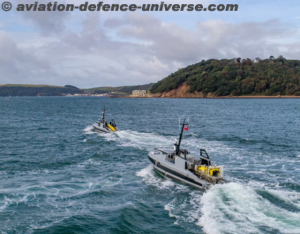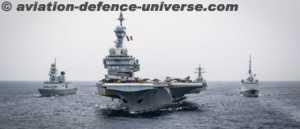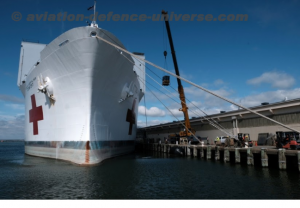
Washington DC. 25 March 2020.Three Sailors Aboard The Aircraft Carrier USS Theodore Roosevelt Underway In The Pacific Ocean Were Diagnosed With COVID-19 And Were Evacuated From The Ship, Acting Navy Secretary Thomas B. Modly said.
“We’ve identified all the folks they’ve had contact with, and we’re quarantining them as well,” Modly said at a Pentagon news conference today, where he appeared with Navy Adm. Michael Gilday, the chief of naval operations. “This is an example of how we are able to keep our ships deployed at seas and underway, even with active COVID-19 cases. Our force remains on watch throughout the world [during] this crisis, and they’re continuing to execute their primary mission under the National Defense Strategy.”
Navy ships are sailing, Navy planes are flying, and training is still happening to safeguard U.S. national interests and those of the nation’s allies and partners around the world, Modly said.
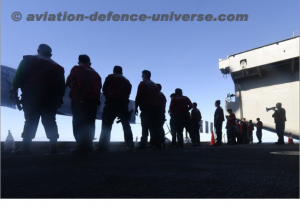
In the meantime, the hospital ship USNS Mercy deployed 1,128 military personnel and civilians yesterday to Los Angeles in support of the nation’s COVID-19 efforts, providing a spectrum of medical care, including critical and urgent care for adults, he said. The Mercy was off the coast of California today and should be in Los Angeles in the next couple of days, he added.
Another hospital ship, the USNS Comfort, is preparing to do the same mission for the city of New York, Modly said, noting that both ships will operate under the operational control of the commander of U.S. Naval Forces Northern Command. “We will coordinate closely with state and local public health authorities to ensure the well-being of our personnel and the local population,” he said.
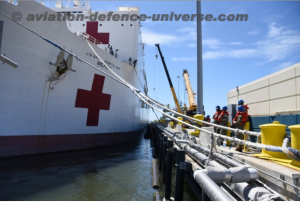
The ships will serve as referral hospitals for dockside patients not infected with COVID-19, Modly emphasized. Rather, he said, they will handle the overflow of acute trauma cases and other urgent needs, and they will not handle pediatrics or OB/Gyn cases. “This will allow our shore-based hospitals to focus their medical care and resources on patients with COVID-19,” the acting secretary told reporters.
This is a perfect example of how the Navy and Marine Corps can respond to the needs of the American people wherever and whenever they’re needed, Modly said. “The Navy and Marine Corps front lines are constantly being redrawn, and we’re realizing today that unpredictability is with us,” he added. “And that’s why we need to be ready at all times to adjust and adapt to any emerging threat, even one too small to be seen by the human eye.”
Modly said he wrote to the force recently to urge sailors and Marines to always be ready, not just as an organization, but also as individuals, to exhibit the personal qualities of speed, transparency, adaptability, collaboration, humility, trust and “a healthy dose of skepticism as we address these challenges.”
“And I can say every one of these people has exhibited these qualities in getting the Mercy and Comfort prepared for these missions, as well as the many other ways our force is supporting the whole-of-government response to this pandemic,” he said.
Military families are at the top of his mind daily, Modly said, and the Navy is committed to doing everything it can for their well-being while minimizing the impact on their daily lives as much as possible.
“I’m confident the agility of the Navy and Marine Corps team will help to save lives and protect this nation as it always has, and always will,” Modly said.
Gilday said that overall, the Navy has 86 COVID-19 cases: 57 active-duty service members, 13 Navy civilian employees, 11 Navy family members and five contractors.
About one-third of Navy personnel is at sea, aboard fewer than 100 Navy ships out of a fleet of about 300, the chief of naval operations said.
The Roosevelt was in port about 15 days ago, Gilday said, but it would be difficult to tie the three active cases to one particular port visit.
“We took great precautions when the crew came back from that shore visit, and did enhanced medical screenings of the crew,” he said. “We are moving very quickly to isolate those cases. [We] … understand who they came in contact with over the recent days and weeks, so we’ve begun to look inside the ship and at how we can isolate and contain as best we can. We’re taking this day by day.”







































